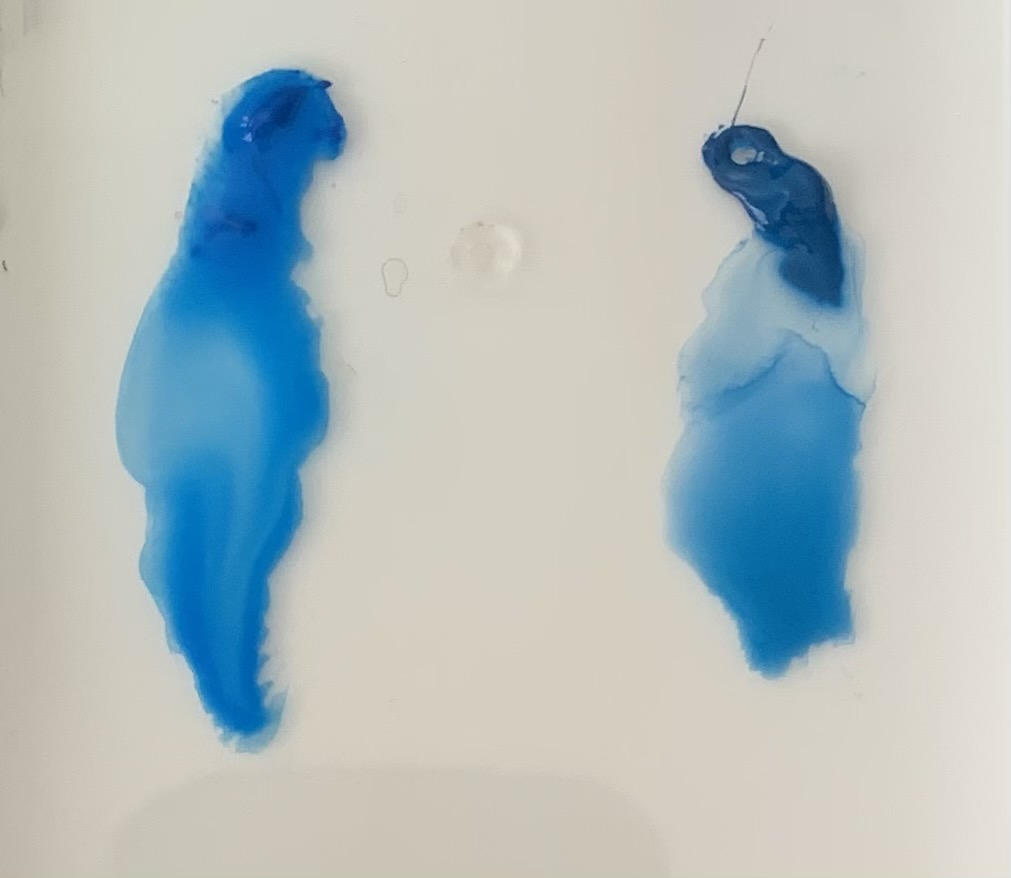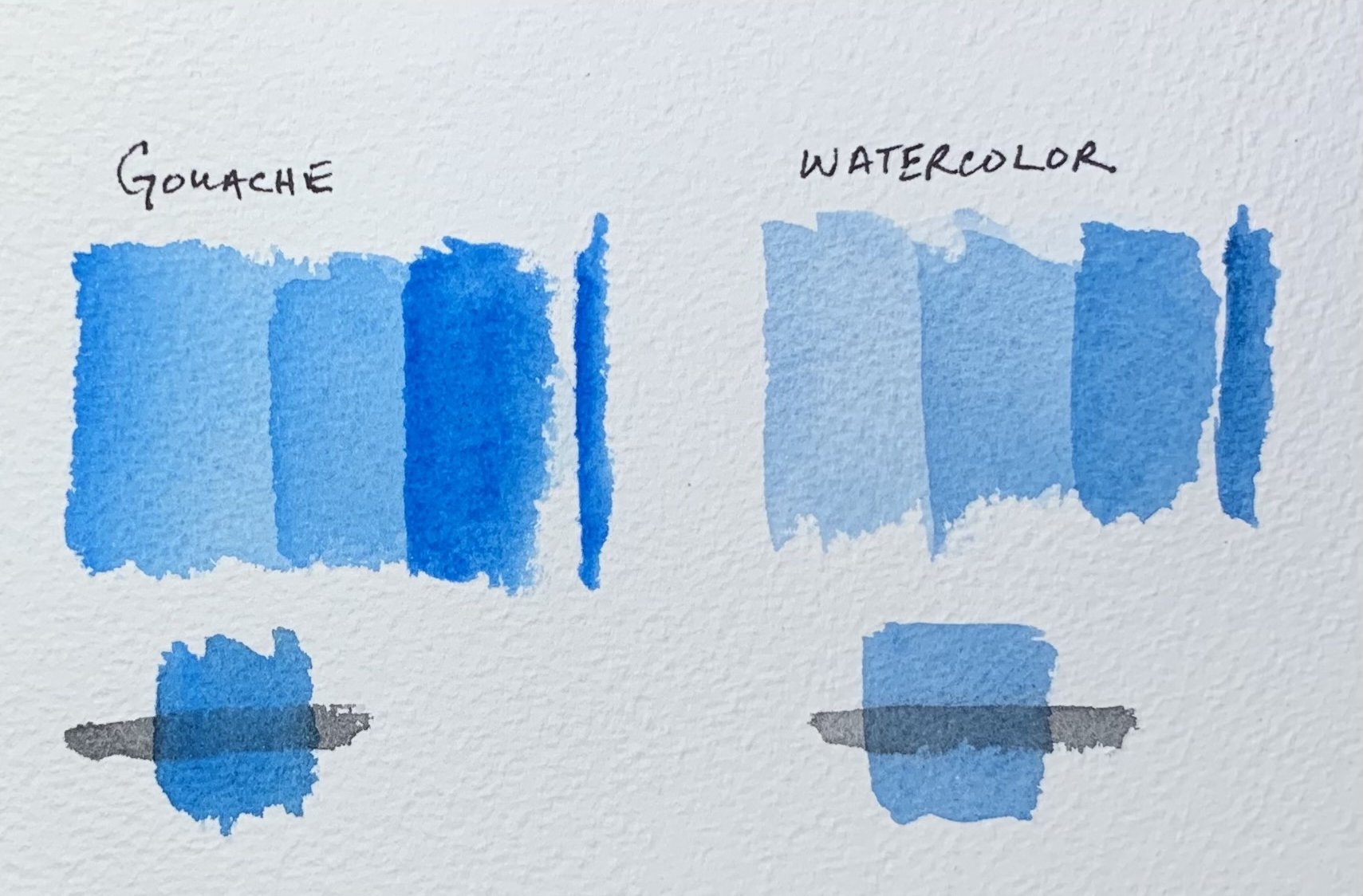Gouache and Watercolor

Gouache (or what I call g-paint) is a type of water-based paint that has been used by artists for more than 1200 years. It's not watercolor, but is made somewhat the same way.
While watercolor paint is made from suspending color pigment in a water-soluble binder, g-paint is made by mixing a color pigment with a white pigment and then adding the water-soluble binder. This method renders the resulting paint opaque (the word gouache comes from "aguazzo" which means mud in Italian).
This paint is popular and is used extensively by commercial artists and illustrators such as architectural graphic designers, because it's easy to use, quick to dry, and it renders beautiful color art which is easy to photograph.
Buying the Correct Gouache
In our modern world, there are now two types of this paint that can be purchased: the older water-based gouache, and a newer acrylic-based gouache.
If you are planning to use gouache with your watercolor, you want to make sure you buy paints that are built with water-soluble binders, not acrylic binders. You cannot mix watercolor with acrylic gouache.
I am a fan of the Winsor-Newton Designer's brand of water-based g-paint, but there are other brands (Holbein, etc) that are good as well.
Visual Comparisons
Here's a comparison. That's Primary Blue g-paint on the left and Cerulean watercolor on the right; the colors are not exactly the same, but close enough.
I mixed the same amount of water into both paints and you can see that the color of the g-paint on the left is even, opaque and flat even when thinned with water. The watercolor on the right goes from a very pale hue to darker as the water runs across the palette, taking the pigment with it.

Below is a comparison of the two types of paint on paper. You can see the flat, even, opaque result of the g-paint on the left.
Even with the same amount of water added, the g-paint continues to look flat, opaque and the color is even, while the watercolor on the right provides several different looking hues, and it looks transparent even when taken straight from the tube, as is shown on that final stroke to the right.
In contrast, the g-paint straight from the tube is very vibrant and opaque, and obscures the dark stroke at the bottom more than the watercolor.

Ways to Use G-Paint with Watercolor
One of the most common uses in watercolor is to use white gouache to add highlights. I do this my paintings when I want emphasize tiny details, such as white tufts of fur over a darker area in an animal painting. You can also add "glistening" effects to eye renderings.
You can also mix white bodycolor with other watercolor hues to create lighter highlighting colors. For instance, if you want to put lighter tan fur tufts over a darker brown area , you can mix the brown paint with a little of the opaque white color to get that lighter tan color.
Other things to consider with using g-paint:
- Be aware that although it is opaque and will paint over most other colors, it might not cover high-staining watercolors such as pthalo blue completely.
- In addition, g-paint doesn't "bloom" like watercolor, and you can't get those neat flowing effects of touching paint into wet areas on the paper like you can with watercolor. Applying g-paint will result in a flat, even area of color.
- Because of the addition of the white pigment, g-paint is thicker and more prone to crack when applied in many layers on paper.
For more information, see this great video here from an art professor who uses gouache for book illustrations. Lots of good information.
So that's a little about gouache. I keep a nice selection of these paints in addition to my watercolor paint collection, and use the white g-paint many times for highlights.